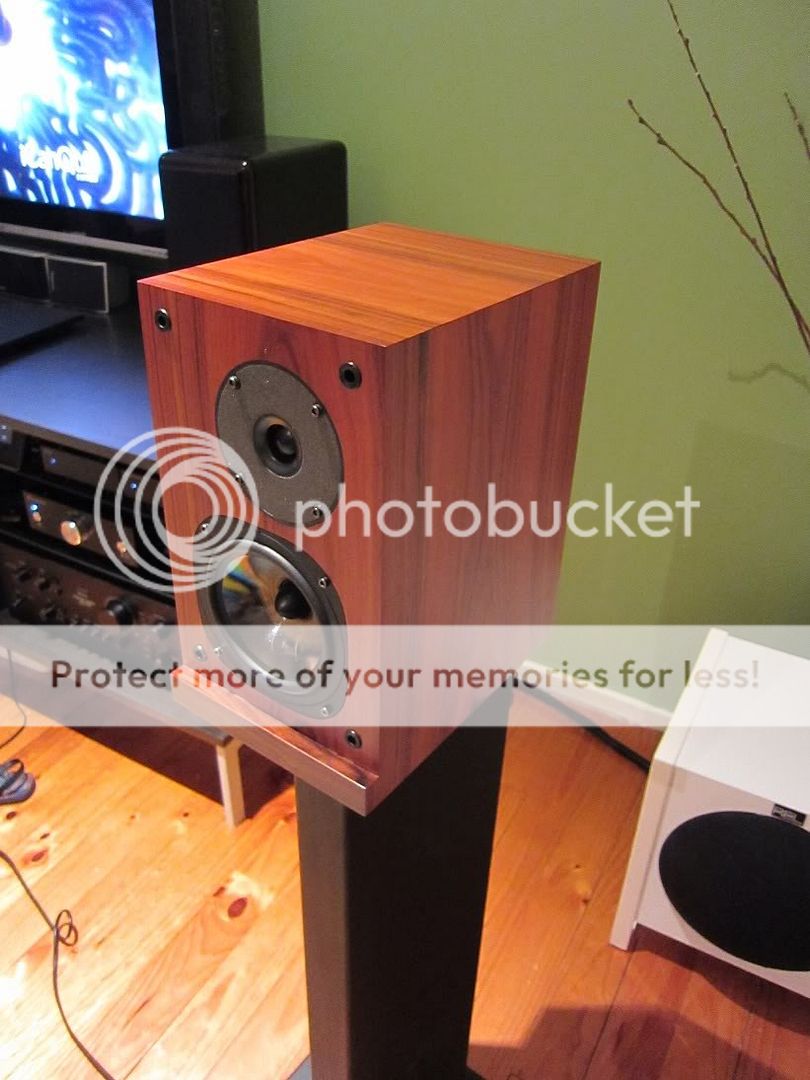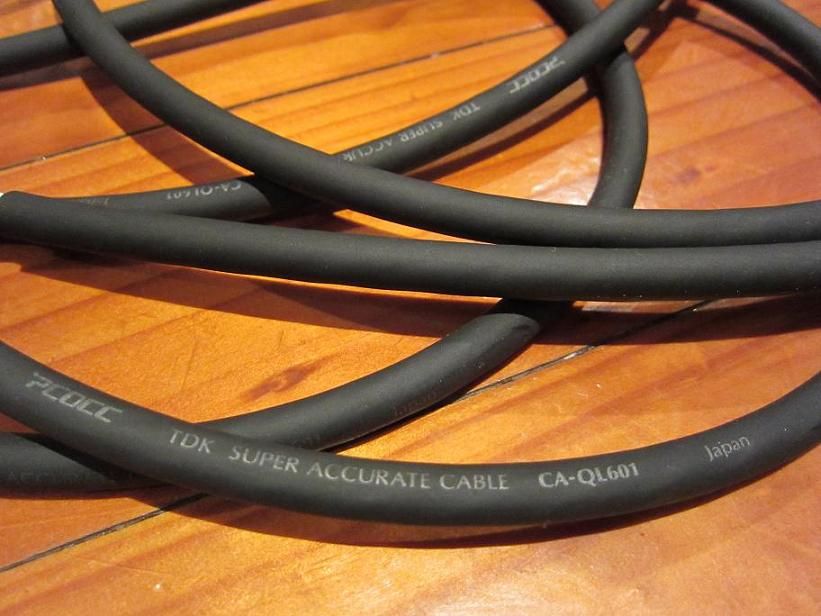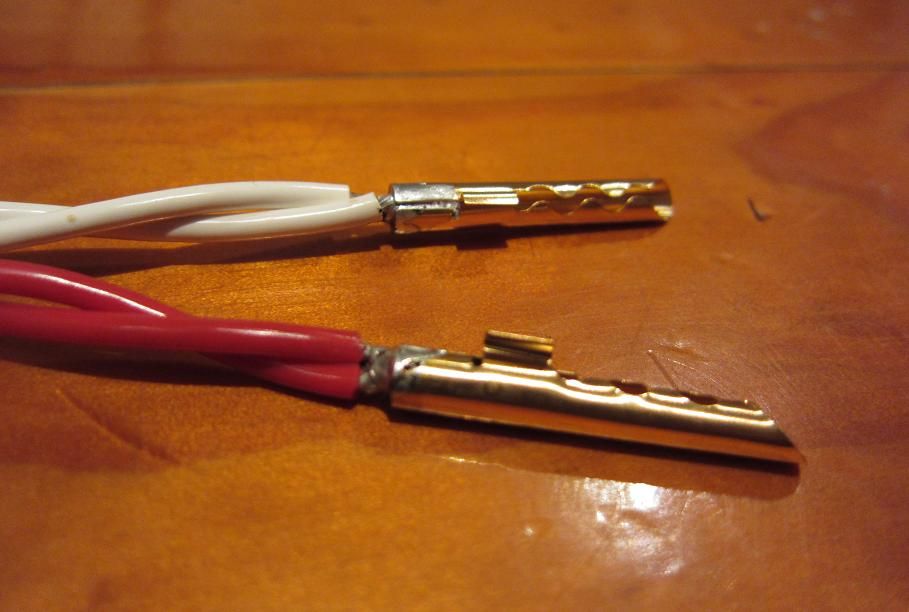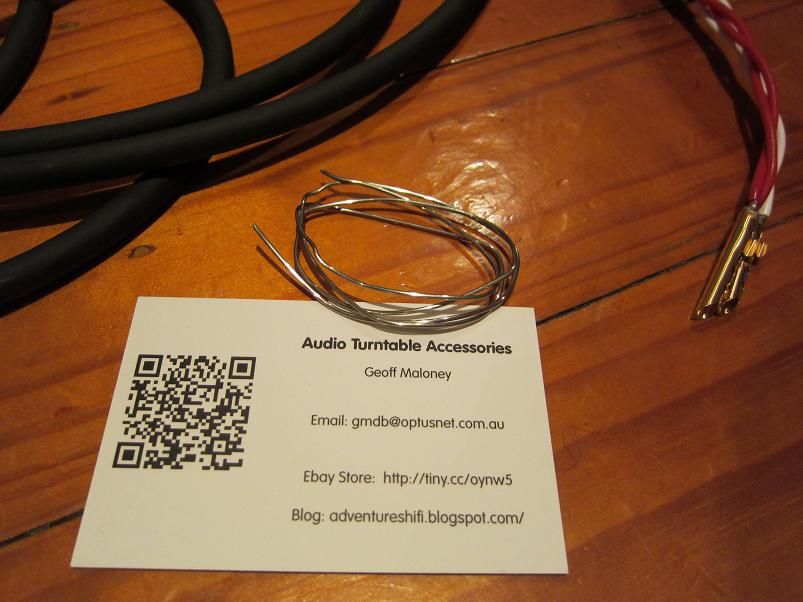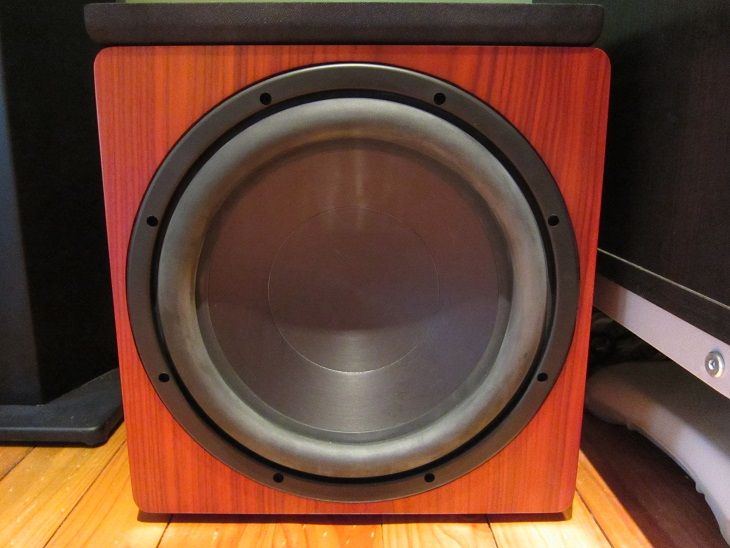A few recent additions:
Aurealis R1 interconnects (hand-made with Neotech PCOCC, Eichmann copper bullets and Mundorf silver solder) and Aurealis R2 CuT interconnects (the same build components, but with different thickness of wire and a different design). The interconnects sit between the DAC and amp. They are designed upon the philosophy of using the purest materials possible - all copper, no brass etc.
Anyone who claims that all interconnects sound the same need only compare these two interconnects back-to-back to see what a minor difference in wire size and geometry can make to the sound! The R2s present a strong up-front image, whereas the R1s are more laid-back and present a deeper sound stage. It's quite an eye (and ear) opener!!
Very very good interconnects for the dollars - check out the ebay seller 'gmdb' for further information.
I've also sourced some NOS TDK PCOCC star quad speaker cable sourced from Monarchy Audio. Apparently TDK were looking to enter the cable business many years back and went to the effort of having reels of PCOCC cable made up by Furukawa, including the use of PTFE dielectric and a special exterior jacket, but TDK pulled the pin and decided to focus on other aspects of their business instead.
Each of the four conductors is 14AWG, so doubling them up as I have done results in 2 x 11AWG conductors.
One end is terminated with Multi Contact low mass beryllium copper BFA bananas and Mundorf Silver Solder (sourced from Audio Turntable Accessories / gmdb) , whilst the other end is bare wire treated with Caig DeOxIt Gold to prevent oxidation.
They do the job nicely and sound very clean and balanced. Better bass and treble extension than the Tellurium Q cables that I recently owned, and less edgy than the Grave Science cables in the upper registers.
Lastly, I managed to grab a second-hand but as-new SVS SB12-plus sealed enclosure 12" sub with a 425W amp in 'rosemar' real timber veneer.
Compared to the REL that I previously had, and the B&W sub that I've recently been using, the SB12-plus is tighter and definitely goes lower with more control and lower perceived distortion. Insert cliches here------> tight, deep, musical bass with no apparent boominess at all. SVS have done a great job shoe-horning a 12" driver into a 35 x 35 x 35cm cube and making it sound as decent as it does. Kudos to SVS!
The build quality of the sub is superb. The timber veneer is divine; the anodised aluminium cone woofer is a brute, and the amp is nicely featured. I also love the pin-less grille which is held on via high-strength magnets.
System integration was fairly straight-forward with minimal gain required, a 50hz crossover point, and a smidgeon of cut via the PEQ to tame a percieved peak that I heard when using a variety of test-tones at 5hz intervals. She sounds pretty flat to me now, but one day I will invest in a DB meter or speaker testing gear to check the response properly.
I've got the sub hooked up via the speaker-level inputs and the 'B' outputs on my Sansui. This makes it really easy to click the B speaker outputs on and off and compare the sound with and without the sub instantly. The improvement in the depth and scale of the music with the sub playing is obvious.
I'm smitten!

































